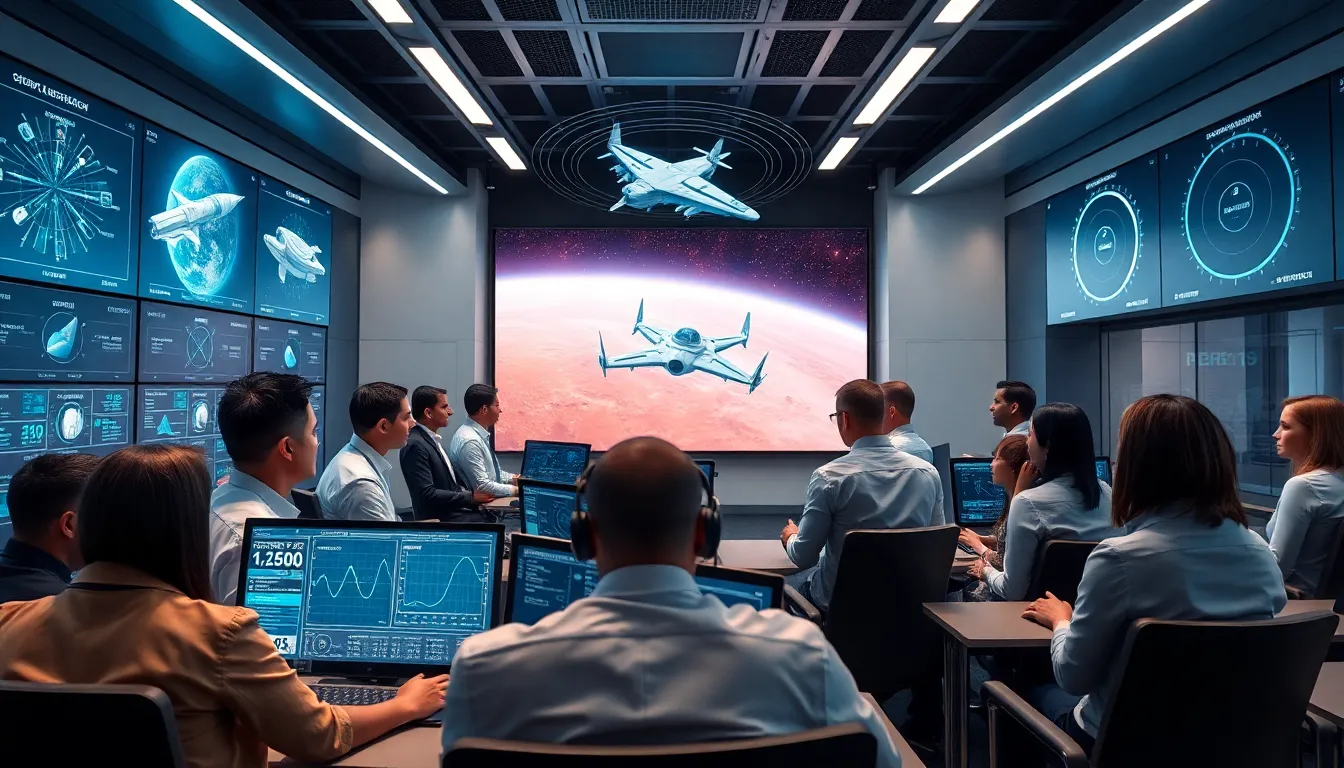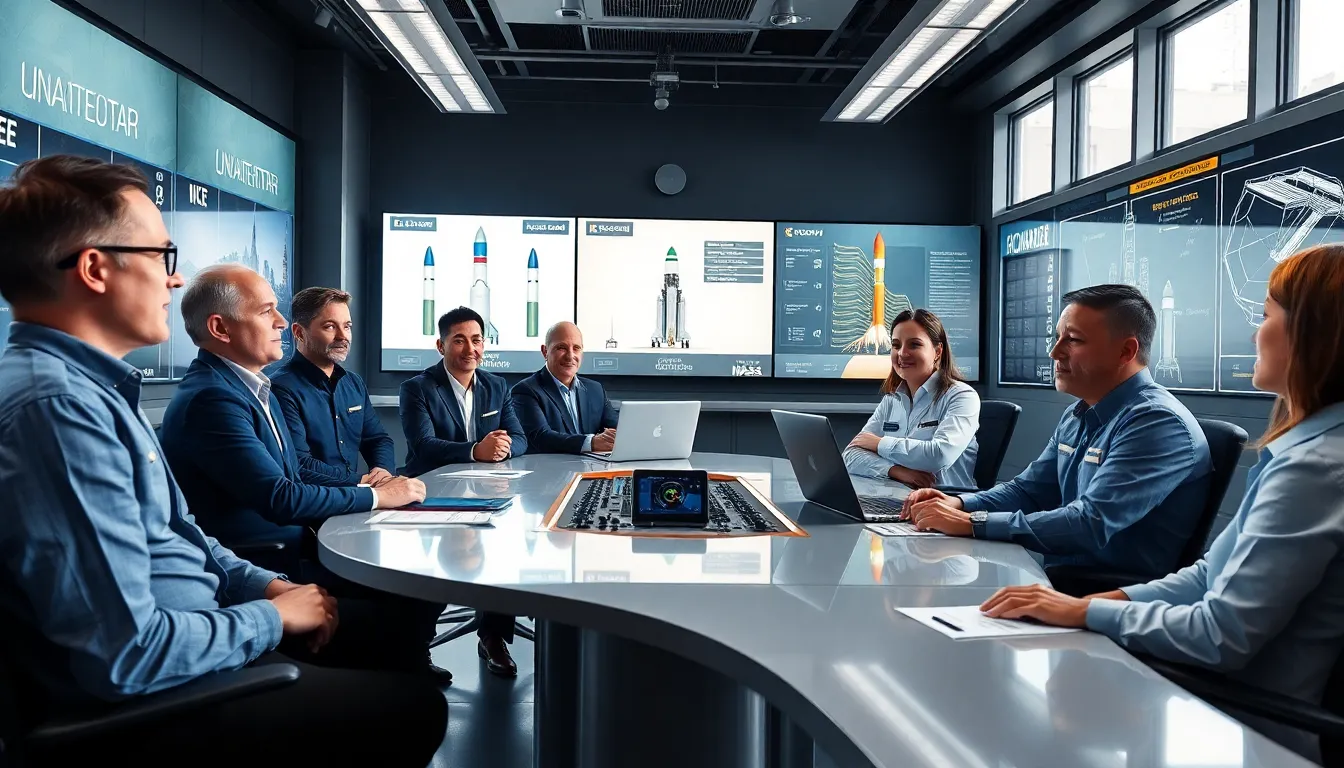Have you ever wondered how fast we could zoom through space with the gadgets and gizmos we have today? The thought of drifting among the stars at breakneck speeds is both exhilarating and a tad terrifying. Let’s be honest, space travel isn’t as simple as hopping in a car and hitting the freeway. With our current technology, the speeds we achieve are more akin to a toddler’s first tricycle ride than a NASCAR sprint. So buckle up as we jump into the nitty-gritty of space travel speeds and the tech making it all possible.
Table of Contents
ToggleUnderstanding Space Travel Speeds

To grasp how fast we can travel in space, it’s essential to understand what speeds are feasible with our existing technology. Space isn’t like a typical road trip: it operates on a whole different level. The vastness of space presents unique challenges that define our speed limits, making it crucial to have a clear picture of the current options available.
When discussing space travel, it’s important to note the differences in measurements used. For instance, speed often depends on gravitational influences, propulsion methods, and even atmospheric conditions during launch. The idea of speed in space can range from the leisurely pace of a spacecraft’s orbit around Earth to the much faster velocities needed for interplanetary travel.
Current Technologies and Their Speed Capabilities
The Role of Chemical Rockets
When it comes to launching humans and equipment into space, chemical rockets are still the heavyweight champions. These rockets operate by burning fuel with oxidizers to create thrust, which sends them off on their celestial journeys. For instance, the Saturn V rocket achieved a top speed of around 25,000 miles per hour during the Apollo missions. That might sound outrageously fast, because it is. But, achieving such speeds is not without its drawbacks, including hefty fuel costs and environmental impacts.
Advancements in Ion Propulsion
While chemical rockets are speedy, they have their limits. Enter ion propulsion, a technology that’s been gaining traction in recent years. This method involves expelling ions to create thrust, offering remarkably high efficiency and longevity. NASA’s Dawn spacecraft showcased the potential of ion propulsion, reaching speeds of up to 24,000 miles per hour. While that doesn’t compete with the initial burst of chemical rockets, ion propulsion excels in long-duration missions where continuous thrust matters more than sheer speed.
Exploring Electromagnetic Propulsion
In the quest for faster travel, electromagnetic propulsion is stirring up excitement. This technology uses electromagnetic fields to propel spacecraft, offering the tantalizing promise of greatly increased speeds without the massive fuel requirements of traditional methods. Concepts such as the EM Drive have been proposed, claiming potential speeds that could rival the sun itself, at least in theory.
But, the science behind electromagnetic propulsion is still in its infancy. Many tests yield conflicting results, raising questions about their feasibility. But if successful, we could traverse our solar system in record time.
Challenges of High-Speed Space Travel
Energy Requirements and Fuel Limitations
Now, let’s not get ahead of ourselves too quickly. High-speed space travel isn’t just about having the right technology: it’s also about energy. Consider this: the faster you want to go, the more energy you need. Current propulsion systems often struggle with the amount of fuel required to achieve even moderate speeds over significant distances. Engineers are left pondering how to make the journey efficient without running out of gas, literally.
Effect of Relativity on Space Travel
A mind-boggling aspect of high-speed travel is the theory of relativity, proposed by Einstein. As speed increases, time behaves differently. When nearing the speed of light, time slows down relative to someone standing still. In practical terms, if explorers eventually travel at such speeds, they may witness epochs passing on Earth in mere years. This poses both fascinating and daunting questions about human life and evolution.
The Future of Space Travel Technologies
Concepts Under Development
What’s next for space travel? The future is a mixed bag of ambitious ideas and inventive technologies, including solar sails, antimatter propulsion, and nuclear thermal rockets. These futuristic concepts aim to overcome the limitations of current propulsion systems, promising to get us to other planets, and potentially even beyond our solar system faster than ever before.
While many of these technologies are still in the conceptual stage, advancements are being made all the time. The next few decades could bring significant breakthroughs that reshape our understanding of space speed.
The Potential of Warp Drives and Beyond
Yes, you read that right, warp drives. Just like in those sci-fi classics, the concept of a warp drive tantalizingly proposes bending space-time itself to allow for faster-than-light travel. While theoretical, preliminary research suggests that manipulating space could be possible, although we’re a long way from living the lives of our favorite intergalactic heroes.
Plus, who wouldn’t want to sign up for a trip to Alpha Centauri in mere weeks instead of centuries? The mathematics may be complex, but the potential is beyond thrilling. If we can crack the code on warp drives, the universe might just open up in ways currently unimaginable.






